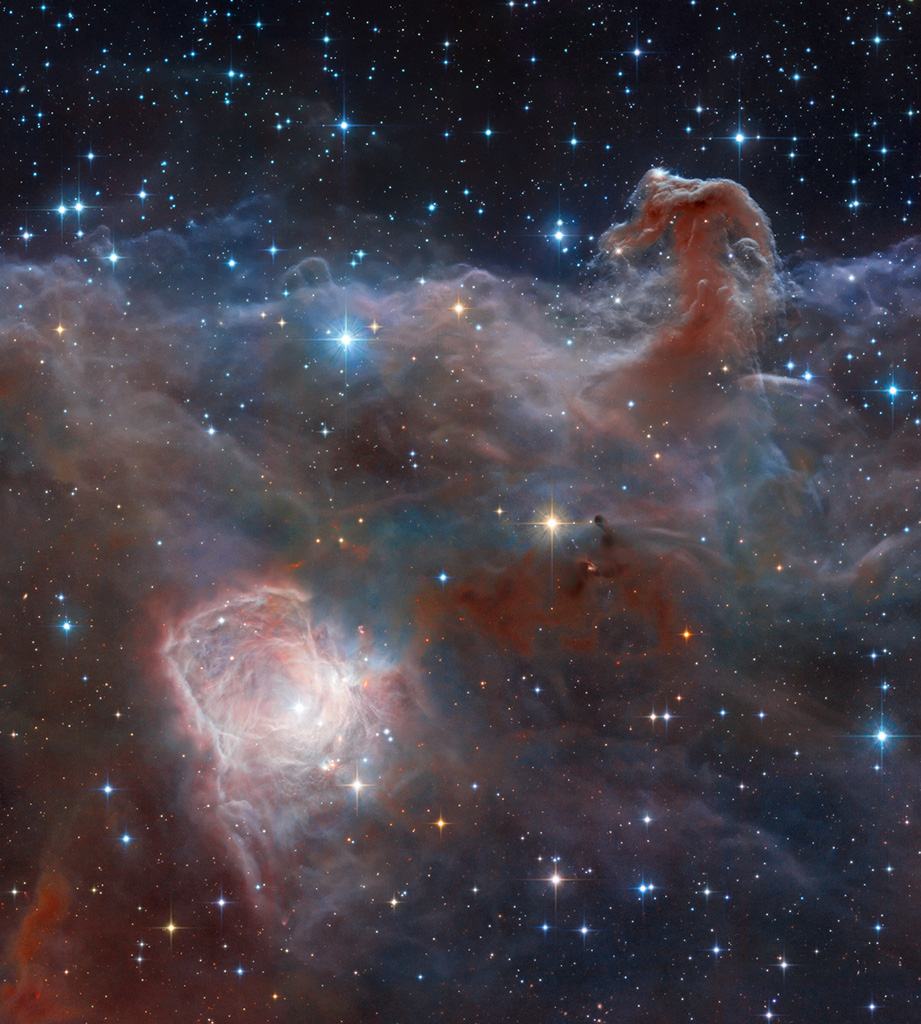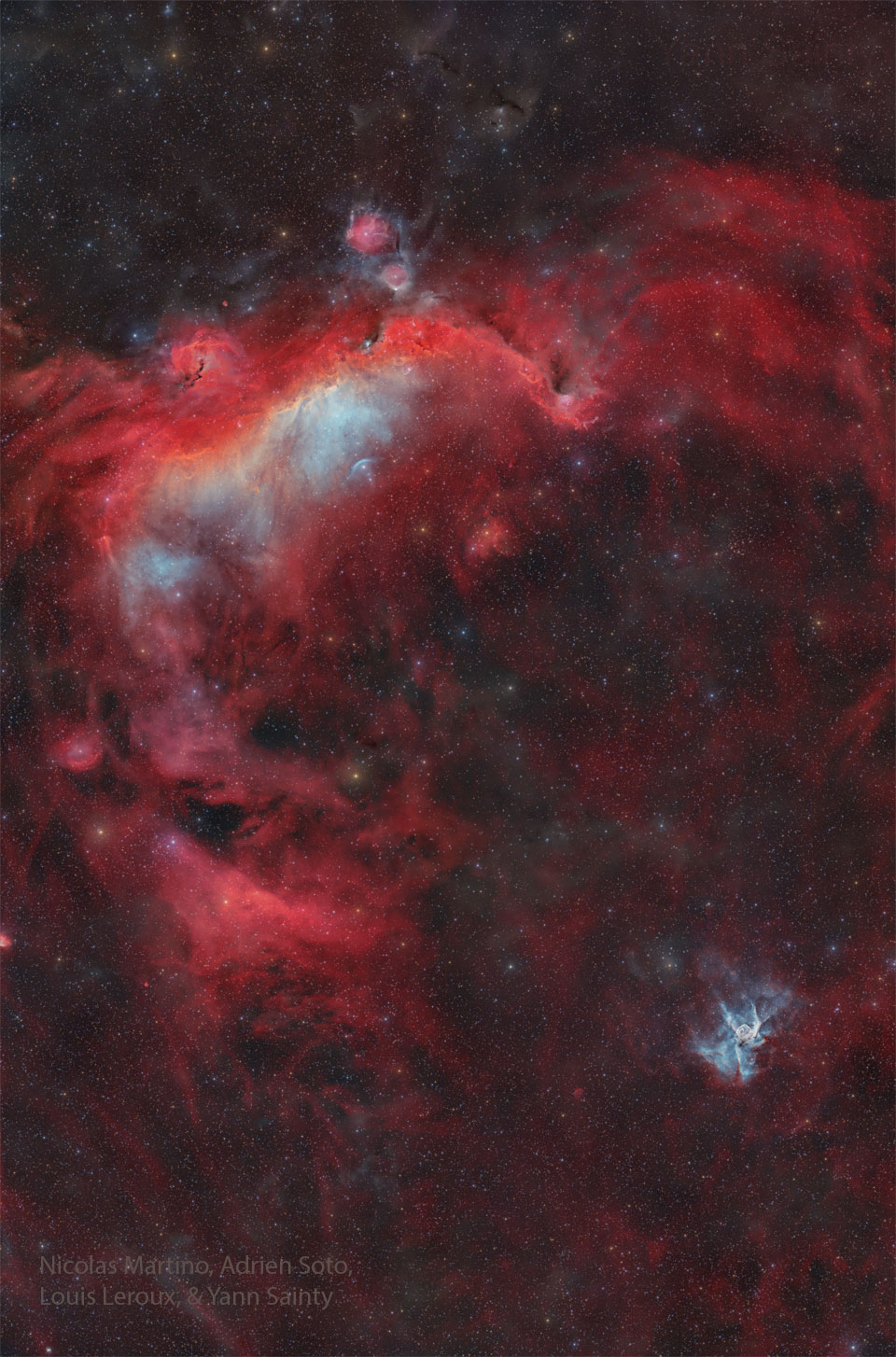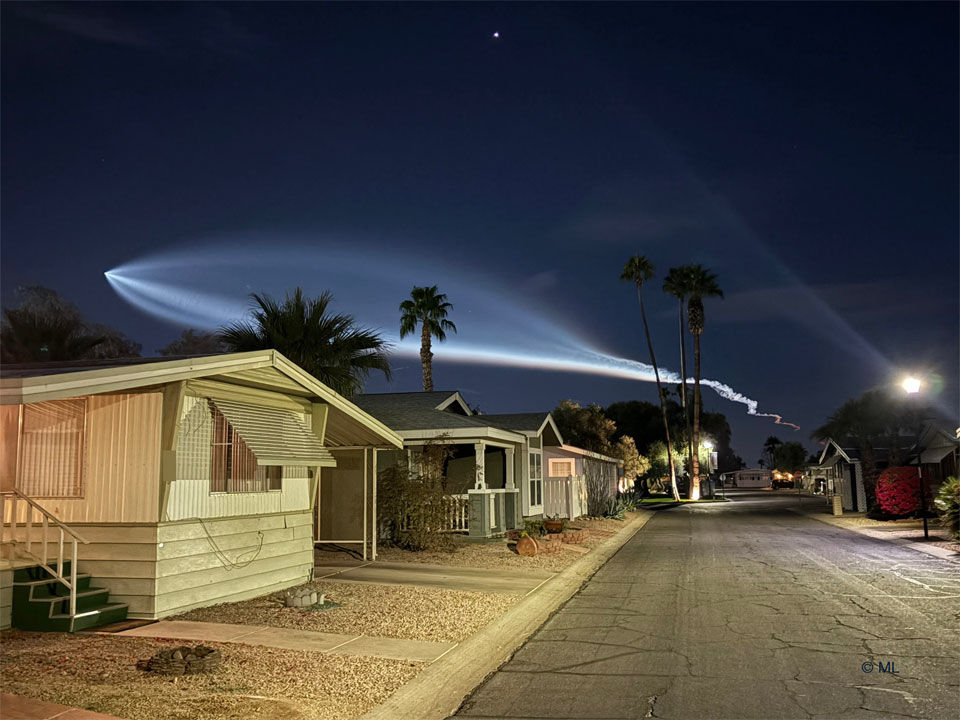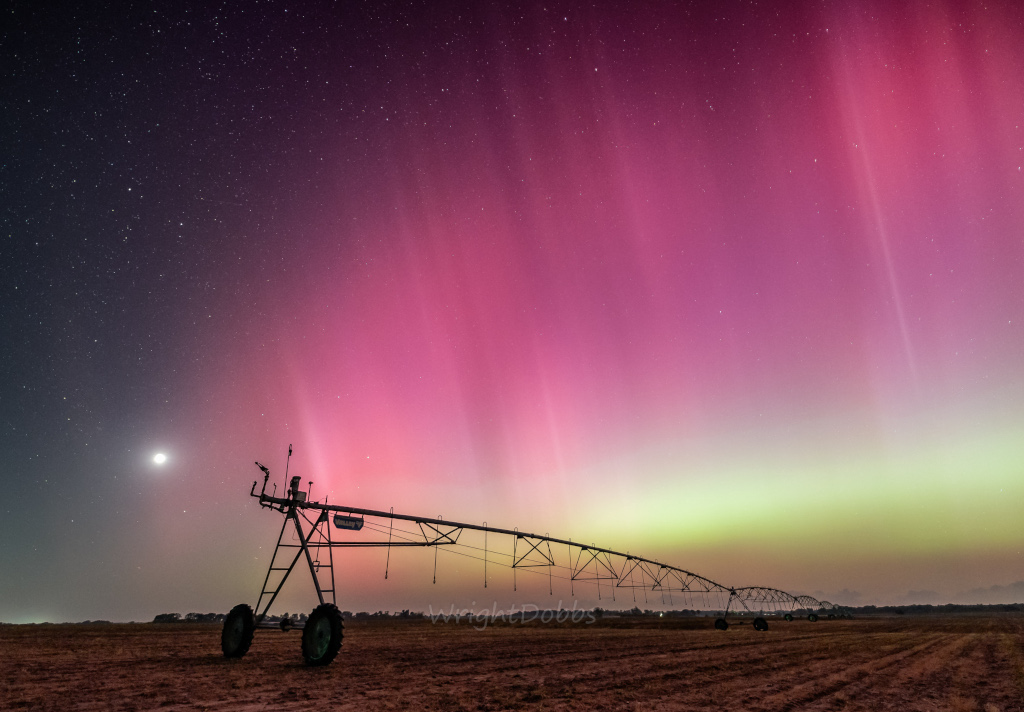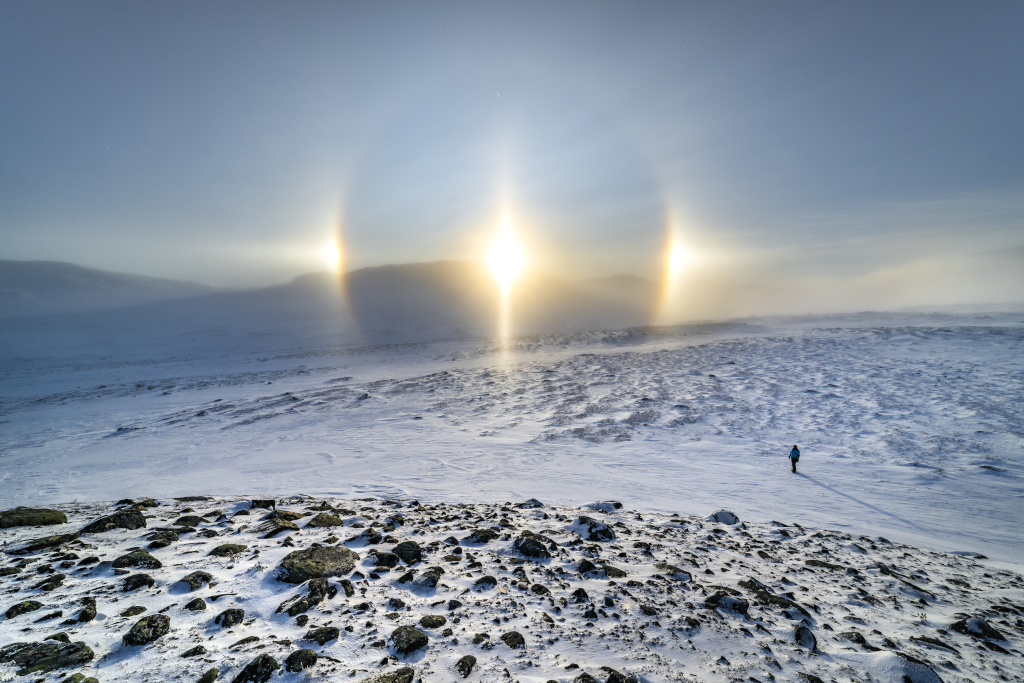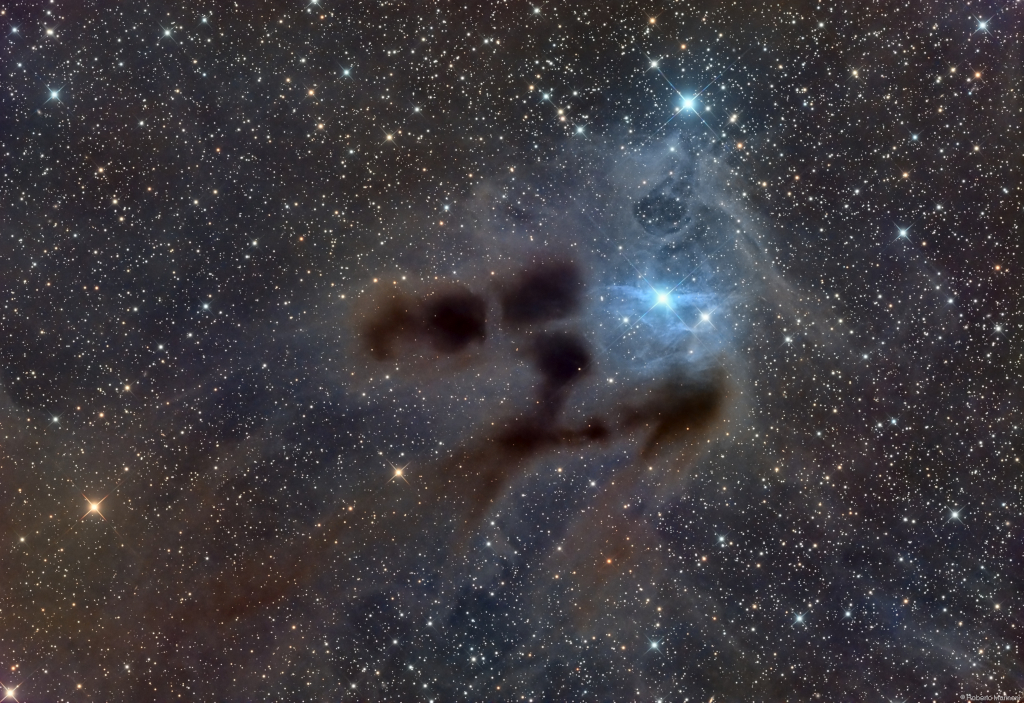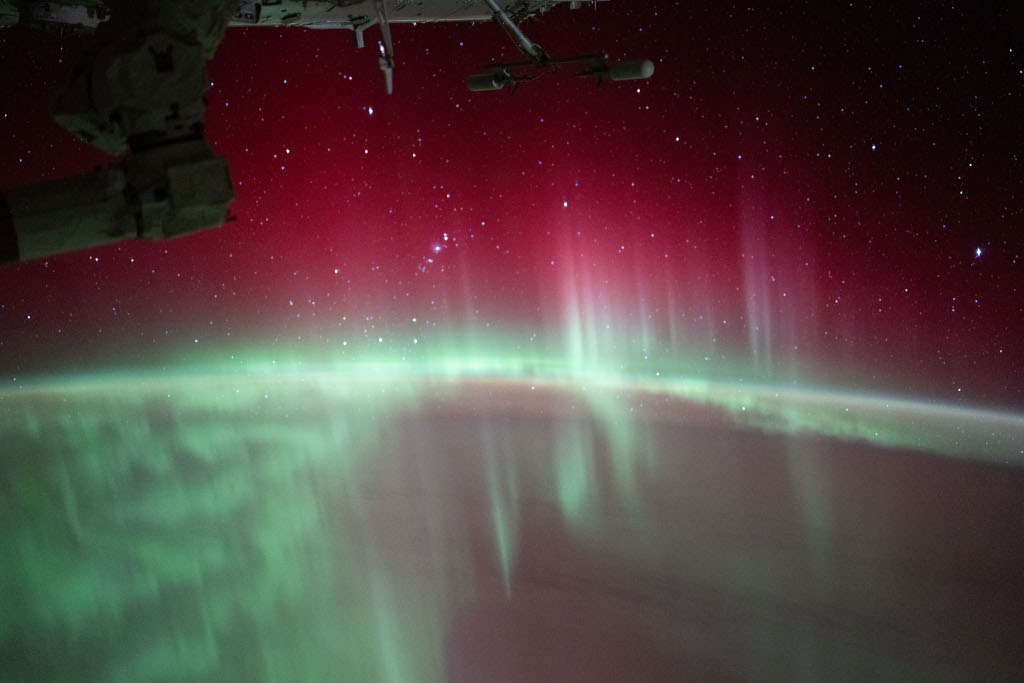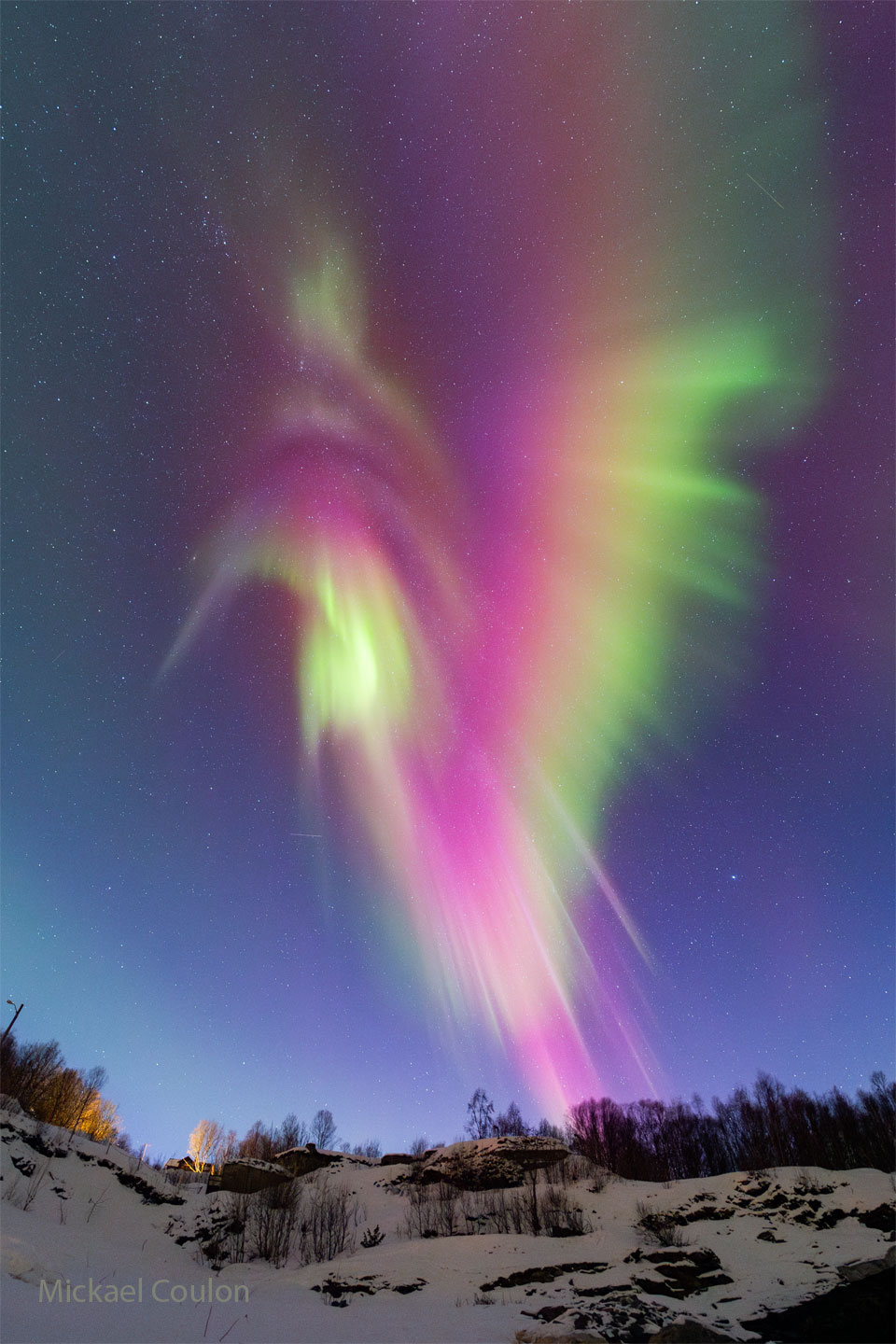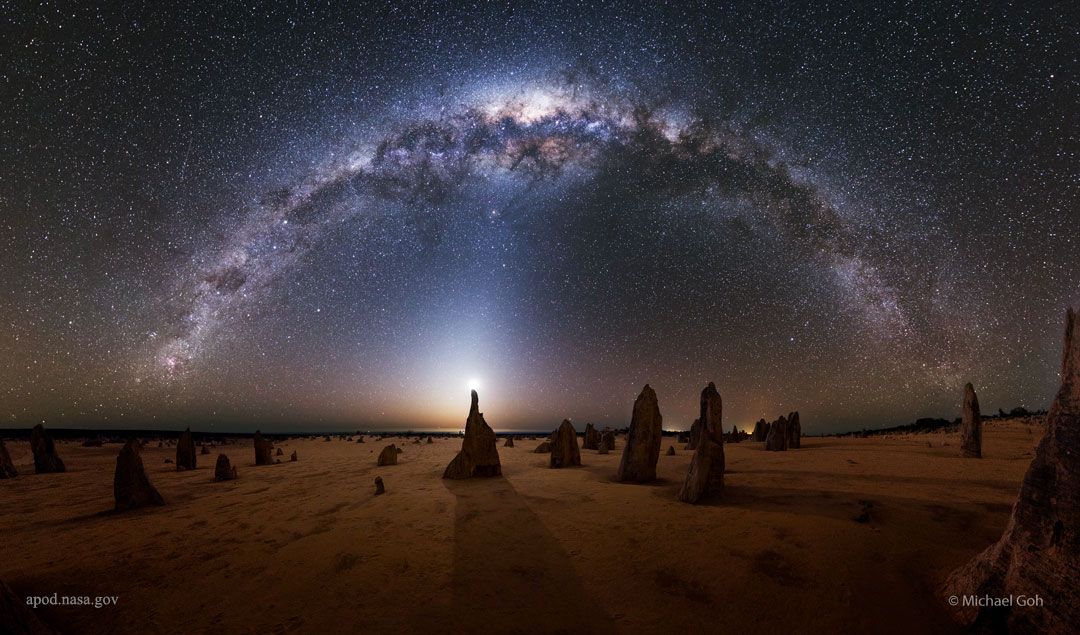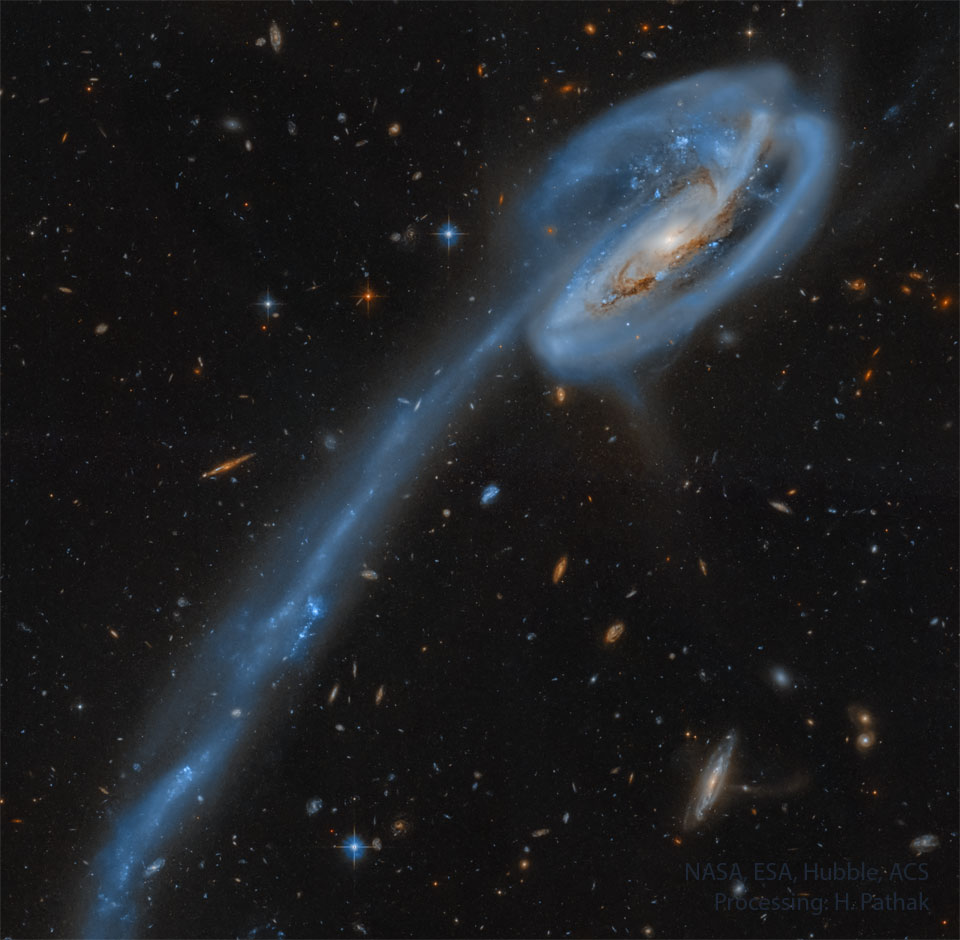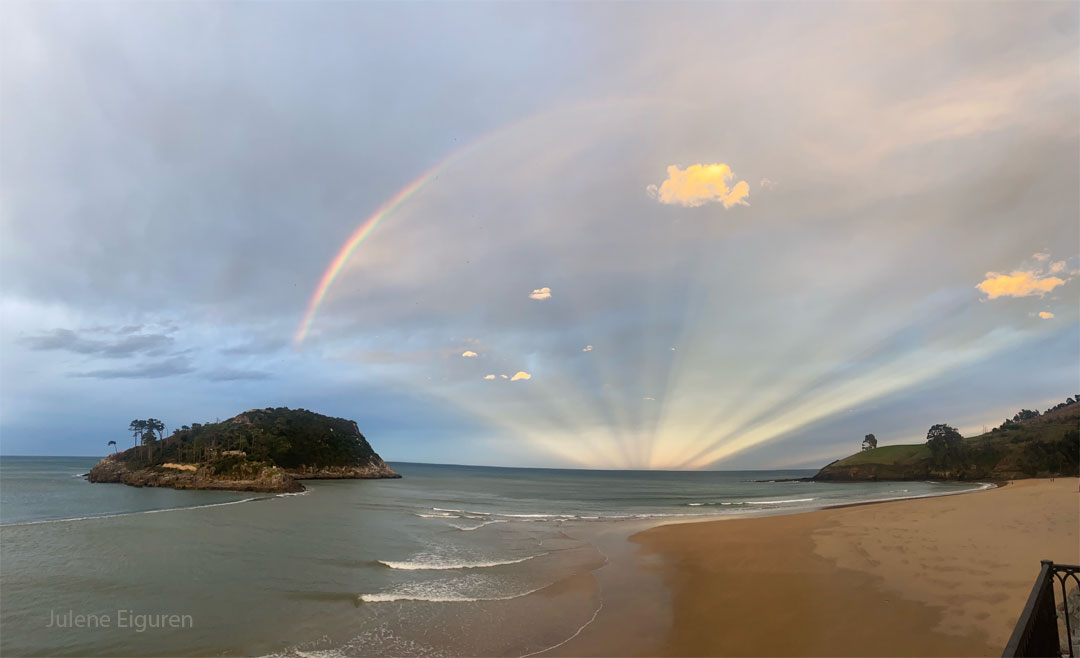| Title: NASA pics | |
| Grapevine50sRoost > ~GENERAL~ > GENERAL DISCUSSION | Go to subcategory: |
| Author | Content |
|
zxxlyzq
|
|
|
Date Posted:09/03/2018 12:10 PMCopy HTML Composition and Processing: Robert Gendler Image Data: ESO, VISTA, HLA, Hubble Heritage Team (STScI/AURA) Explanation: Combined image data from the massive, ground-based VISTA telescope and the Hubble Space Telescope was used to create this wide perspective of the interstellar landscape surrounding the famous Horsehead Nebula. Captured at near-infrared wavelengths, the region's dusty molecular cloud sprawls across the scene that covers an angle about two-thirds the size of the Full Moon on the sky. Left to right the frame spans just over 10 light-years at the Horsehead's estimated distance of 1,600 light-years. Also known as Barnard 33, the still recognizable Horsehead Nebula stands at the upper right, the near-infrared glow of a dusty pillar topped with newborn stars. Below and left, the bright reflection nebula NGC 2023 is itself the illuminated environs of a hot young star. Obscuring clouds below the base of the Horsehead and on the outskirts of NGC 2023 show the tell-tale far red emission of energetic jets, known as Herbig-Haro objects, also associated with newborn stars. |
|
|
Rockymz
|
Share to:





 #1
#1
|
|
Re:NASA pics Date Posted:18/02/2025 9:31 AMCopy HTML Image Credit & Copyright: Nicolas Martino, Adrien Soto, Louis Leroux & Yann Sainty Explanation: Seen as a seagull and a duck, these nebulae are not the only cosmic clouds to evoke images of flight. But both are winging their way across this broad celestial landscape, spanning almost 7 degrees across planet Earth's night sky toward the constellation of the Big Dog (Canis Major). The expansive Seagull (top center) is itself composed of two major cataloged emission nebulas. Brighter NGC 2327 forms the head with the more diffuse IC 2177 as the wings and body. Impressively, the Seagull's wingspan would correspond to about 250 light-years at the nebula's estimated distance of 3,800 light-years. At the lower right, the Duck appears much more compact and would span only about 50 light-years given its 15,000 light-year distance estimate. Blown by energetic winds from an extremely massive, hot star near its center, the Duck nebula is cataloged as NGC 2359. Of course, the Duck's thick body and winged appendages also lend it the slightly more dramatic popular moniker, Thor's Helmet |
|
|
Megan57
|
Share to:





 #2
#2
|
|
Re:NASA pics Date Posted:18/02/2025 7:31 AMCopy HTML Amazing Rocky x |
|
|
Rockymz
|
Share to:





 #3
#3
|
|
Re:NASA pics Date Posted:17/02/2025 10:03 AMCopy HTML Image Credit & Copyright: Martin LaMontagne Explanation: What's happened to the sky? Last Monday, the photogenic launch plume from a SpaceX rocket launch created quite a spectacle over parts of southern California and Arizona. Looking at times like a giant space fish, the impressive rocket launch from Vandenberg Air Force Base near Lompoc, California, was so bright because it was backlit by the setting Sun. The Falcon 9 rocket successfully delivered to low Earth orbit 23 Starlink communications satellites. The plume from the first stage is seen on the right, while the soaring upper stage rocket is seen at the apex of the plume toward the left. Venus appears at the top of the frame, while a bright streetlight shines on the far right. The featured image was captured toward the west after sunset from near Phoenix, Arizona |
|
|
Megan57
|
Share to:





 #4
#4
|
|
Re:NASA pics Date Posted:17/02/2025 6:56 AMCopy HTML Amazing Rocky |
|
|
Rockymz
|
Share to:





 #5
#5
|
|
Re:NASA pics Date Posted:16/02/2025 7:53 AMCopy HTML Image Credit & Copyright: Wright Dobbs Explanation: A familiar sight from Georgia, USA, the Moon sets near the western horizon in this rural night skyscape. Captured on May 10 before local midnight, the image overexposes the Moon's bright waxing crescent at left in the frame. A long irrigation rig stretches across farmland about 15 miles north of the city of Bainbridge. Shimmering curtains of aurora shine across the starry sky, definitely an unfamiliar sight for southern Georgia nights. Last weekend, extreme geomagnetic storms triggered by the recent intense activity from solar active region AR 3664 brought epic displays of aurora, usually seen closer to the poles, to southern Georgia and even lower latitudes on planet Earth. As solar activity ramps up, more storms are possible. |
|
|
Megan57
|
Share to:





 #6
#6
|
|
Re:NASA pics Date Posted:16/02/2025 7:29 AMCopy HTML Wow amazing |
|
|
Rockymz
|
Share to:





 #7
#7
|
|
Re:NASA pics Date Posted:15/02/2025 8:56 AMCopy HTML Image Credit & Copyright: Felipe Menzella Explanation: Three suns seem to hug the horizon in this otherworldly winterscape. But the evocative scene was captured during a February 3rd snowmobile exploration of the mountainous region around Abisko National Park, northern Sweden, planet Earth. The two bright spots on either side of Earth's Sun are parhelia (singular parhelion), also known as mock suns or sun dogs. The parhelia are caused by hexagonal ice crystals suspended in the hazy atmosphere that reflect and refract sunlight. Commonly seen in winter and at high latitudes, the bright parhelia lie along the visible 22 degree ice halo of the Sun. |
|
|
Megan57
|
Share to:





 #8
#8
|
|
Re:NASA pics Date Posted:14/02/2025 11:42 AMCopy HTML Letting me post now very queer. Thanks Rocky |
|
|
Rockymz
|
Share to:





 #9
#9
|
|
Re:NASA pics Date Posted:14/02/2025 9:03 AMCopy HTML Image Credit & Copyright: Harry Karamitsos Explanation: The Rosette Nebula, NGC 2237, is not the only cosmic cloud of gas and dust to evoke the imagery of flowers, but it is probably the most famous. At the edge of a large molecular cloud in Monoceros some 5,000 light years away, the petals of this cosmic rose are actually a stellar nursery. The lovely, symmetric shape is sculpted by the winds and radiation from its central cluster of hot young, O-type stars. Stars in the energetic cluster, cataloged as NGC 2244, are only a few million years young, while the central cavity in the Rosette Nebula, is about 50 light-years in diameter. The nebula can be seen with a small telescope toward the constellation of Monoceros, the Unicorn. This natural appearing telescopic portrait of the Rosette Nebula was made using broadband color filters, but sometimes roses aren't red. |
|
|
Rockymz
|
Share to:





 #10
#10
|
|
Re:NASA pics Date Posted:13/02/2025 9:21 AMCopy HTML Image Credit & Copyright: Roberto Marinoni Explanation: Riding high in the constellation of Auriga, beautiful, blue VdB 31 is the 31st object in Sidney van den Bergh's 1966 catalog of reflection nebulae. It shares this well-composed celestial still life with dark, obscuring clouds B26, B27, and B28, recorded in Edward E. Barnard's 1919 catalog of dark markings in the sky. All are these nebulae are interstellar dust clouds. Barnard's dark nebulae block the light from background stars. For VdB 31 the dust preferentially reflects bluish starlight from embedded, hot, variable star AB Aurigae. Exploring the environs of AB Aurigae with the Hubble Space Telescope has revealed the several million year young star is itself surrounded by a flattened dusty disk with evidence for the ongoing formation of a planetary system. AB Aurigae is about 470 light-years away. At that distance this cosmic canvas would span about eight light-years. |
|
|
Megan57
|
Share to:





 #11
#11
|
|
Re:NASA pics Date Posted:13/02/2025 6:59 AMCopy HTML
|
|
|
Rockymz
|
Share to:





 #12
#12
|
|
Re:NASA pics Date Posted:12/02/2025 8:27 AMCopy HTML Image Credit: NASA, ISS Expedition 71 Explanation: This snapshot from the International Space Station was taken on August 11 while orbiting about 430 kilometers above the Indian Ocean, Southern Hemisphere, planet Earth. The spectacular view looks south and east, down toward the planet's horizon and through red and green curtains of aurora australis. The auroral glow is caused by emission from excited oxygen atoms in the extremely rarefied upper atmosphere still present at the level of the orbiting outpost. Green emission from atomic oxygen dominates this scene at altitudes of 100 to 250 kilometers, while red emission from atomic oxygen can extend as high as 500 kilometers altitude. Beyond the glow of these southern lights, this view from low Earth orbit reveals the starry sky from a southern hemisphere perspective. Stars in Orion's belt and the Orion Nebula are near the Earth's limb just left of center. Sirius, alpha star of Canis Major and brightest star in planet Earth's night is above center along the right edge of the southern orbital skyscape. |
|
|
Megan57
|
Share to:





 #13
#13
|
|
Re:NASA pics Date Posted:12/02/2025 6:54 AMCopy HTML
|
|
|
Rockymz
|
Share to:





 #14
#14
|
|
Re:NASA pics Date Posted:11/02/2025 9:05 AMCopy HTML Image Credit & Copyright: Dave Boddington Explanation: Will the spider ever catch the fly? Not if both are large emission nebulas toward the constellation of the Charioteer (Auriga). The spider-shaped gas cloud in the image center is actually an emission nebula labelled IC 417, while the smaller fly-shaped cloud on the left is dubbed NGC 1931 and is both an emission nebula and a reflection nebula. About 10,000 light-years distant, both nebulas harbor young star clusters. For scale, the more compact NGC 1931 (Fly) is about 10 light-years across. The featured deep image, captured over 20 hours during late January in Berkshire UK, also shows more diffuse and red-glowing interstellar gas and dust. |
|
|
Megan57
|
Share to:





 #15
#15
|
|
Re:NASA pics Date Posted:10/02/2025 9:56 AMCopy HTML Absolutely amazing thanks Rocky |
|
|
Rockymz
|
Share to:





 #16
#16
|
|
Re:NASA pics Date Posted:10/02/2025 8:53 AMCopy HTML Image Credit & Copyright: Mickael Coulon Explanation: Is this the largest hummingbird ever? Although it may look like a popular fluttering nectarivore, what is pictured is actually a beautifully detailed and colorful aurora, complete with rays reminiscent of feathers. This aurora was so bright that it was visible to the unaided eye during blue hour -- just after sunset when the sky appears a darkening blue. However, the aurora only looked like a hummingbird through a sensitive camera able to pick up faint glows. As reds typically occurring higher in the Earth's atmosphere than the greens, the real 3D shape of this aurora would likely appear unfamiliar. Auroras are created when an explosion on the Sun causes high energy particles to flow into the Earth's atmosphere and excite atoms and molecules of nitrogen and oxygen. The featured image was captured about two weeks ago above Lyngseidt, Norway. |
|
|
Megan57
|
Share to:





 #17
#17
|
|
Re:NASA pics Date Posted:09/02/2025 9:16 AMCopy HTML Wow amazing Rocky x |
|
|
Rockymz
|
Share to:





 #18
#18
|
|
Re:NASA pics Date Posted:09/02/2025 8:28 AMCopy HTML Image Credit & Copyright: Michael Goh Explanation: What strange world is this? Earth. In the foreground of the featured image are the Pinnacles, unusual rock spires in Nambung National Park in Western Australia. Made of ancient sea shells (limestone), how these human-sized picturesque spires formed remains unknown. In the background, just past the end of the central Pinnacle, is a bright crescent Moon. The eerie glow around the Moon is mostly zodiacal light, sunlight reflected by dust grains orbiting between the planets in the Solar System. Arching across the top is the central band of our Milky Way Galaxy. Many famous stars and nebulas are also visible in the background night sky. The featured 29-panel panorama was taken and composed in 2015 September after detailed planning that involved the Moon, the rock spires, and their corresponding shadows. Even so, the strong zodiacal light was a pleasant surprise. |
|
|
Megan57
|
Share to:





 #19
#19
|
|
Re:NASA pics Date Posted:08/02/2025 7:47 AMCopy HTML Amazing Rocky thank you x |
|
|
Rockymz
|
Share to:





 #20
#20
|
|
Re:NASA pics Date Posted:07/02/2025 9:13 AMCopy HTML Image Credit: NASA, ESA, Imad Pasha (Yale), Pieter van Dokkum (Yale) Explanation: The giant galaxy cataloged as LEDA 1313424 is about two and a half times the size of our own Milky Way. Its remarkable appearance in this recently released Hubble Space Telescope image strongly suggests its nickname "The Bullseye Galaxy". Known as a collisional ring galaxy it has nine rings confirmed by telescopic observations, rippling from its center like waves from a pebble dropped into a pond. Of course, the pebble dropped into the Bullseye galaxy was a galaxy itself. Telescopic observations identify the blue dwarf galaxy at center-left as the likely collider, passing through the giant galaxy's center and forming concentric rings in the wake of their gravitational interaction. The Bullseye Galaxy lies some 567 million light-years away toward the constellation Pisces. At that distance, this stunning Hubble image would span about 530,000 light-years. |
|
|
Megan57
|
Share to:





 #21
#21
|
|
Re:NASA pics Date Posted:07/02/2025 7:28 AMCopy HTML Amazing Rocky |
|
|
Rockymz
|
Share to:





 #22
#22
|
|
Re:NASA pics Date Posted:06/02/2025 8:26 AMCopy HTML Image Credit & Copyright: Lorand Fenyes Explanation: Grand spiral galaxies often seem to get all the glory, flaunting their young, bright, blue star clusters in beautiful, symmetric spiral arms. But small, irregular galaxies form stars too. In fact dwarf galaxy IC 2574 shows clear evidence of intense star forming activity in its telltale reddish regions of glowing hydrogen gas. Just as in spiral galaxies, the turbulent star-forming regions in IC 2574 are churned by stellar winds and supernova explosions spewing material into the galaxy's interstellar medium and triggering further star formation. A mere 12 million light-years distant, IC 2574 is part of the M81 group of galaxies, seen toward the northern constellation Ursa Major. Also known as Coddington's Nebula, the lovely island universe is about 50,000 light-years across, discovered by American astronomer Edwin Coddington in 1898. |
|
|
Megan57
|
Share to:





 #23
#23
|
|
Re:NASA pics Date Posted:06/02/2025 7:00 AMCopy HTML
|
|
|
Rockymz
|
Share to:





 #24
#24
|
|
Re:NASA pics Date Posted:05/02/2025 9:22 AMCopy HTML Image Credit: Hubble Legacy Archive, ESA, NASA; Processing: Harshwardhan Pathak Explanation: Why does this galaxy have such a long tail? In this stunning vista, based on image data from the Hubble Legacy Archive, distant galaxies form a dramatic backdrop for disrupted spiral galaxy Arp 188, the Tadpole Galaxy. The cosmic tadpole is a mere 420 million light-years distant toward the northern constellation of the Dragon (Draco). Its eye-catching tail is about 280 thousand light-years long and features massive, bright blue star clusters. One story goes that a more compact intruder galaxy crossed in front of Arp 188 - from right to left in this view - and was slung around behind the Tadpole by their gravitational attraction. During the close encounter, tidal forces drew out the spiral galaxy's stars, gas, and dust forming the spectacular tail. The intruder galaxy itself, estimated to lie about 300 thousand light-years behind the Tadpole, can be seen through foreground spiral arms at the upper right. Following its terrestrial namesake, the Tadpole Galaxy will likely lose its tail as it grows older, the tail's star clusters forming smaller satellites of the large spiral galaxy. |
|
|
Megan57
|
Share to:





 #25
#25
|
|
Re:NASA pics Date Posted:05/02/2025 6:45 AMCopy HTML Beautiful |
|
|
Rockymz
|
Share to:





 #26
#26
|
|
Re:NASA pics Date Posted:04/02/2025 9:09 AMCopy HTML Image Credit & Copyright: Julene Eiguren Explanation: Yes, but can your rainbow do this? Late in the day, the Sun set as usual toward the west. However, on this day, the more interesting display was 180 degrees around -- toward the east. There, not only was a rainbow visible, but an impressive display of anticrepuscular rays from the rainbow's center. In the featured image from Lekeitio in northern Spain, the Sun is behind the camera. The rainbow resulted from sunlight reflecting back from falling rain. Anticrepuscular rays result from sunlight, blocked by some clouds, going all the way around the sky, overhead, and appearing to converge on the opposite horizon -- an optical illusion. Rainbows by themselves can be exciting to see, and anticrepuscular rays a rare treat, but capturing them both together is even more unusual -- and can look both serene and surreal. |
|
|
Megan57
|
Share to:





 #27
#27
|
|
Re:NASA pics Date Posted:02/02/2025 9:33 AMCopy HTML Amazing Rocky |
|
|
Rockymz
|
Share to:





 #28
#28
|
|
Re:NASA pics Date Posted:02/02/2025 9:15 AMCopy HTML Image Credit: Lionel Majzik Explanation: What's happening to Comet G3 ATLAS? After passing near the Sun in mid-January, the head of the comet has become dimmer and dimmer. By late January, Comet C/2024 G3 (ATLAS) had become a headless wonder -- even though it continued to show impressive tails after sunset in the skies of Earth's Southern Hemisphere. Pictured are images of Comet G3 ATLAS on successive January nights taken from Río Hurtado, Chile. Clearly, the comet's head is brighter and more centrally condensed on the earlier days (left) than on later days (right). A key reason is likely that the comet's nucleus of ice and rock, at the head's center, has fragmented. Comet G3 ATLAS passed well inside the orbit of planet Mercury when at its solar closest, a distance that where heat destroys many comets. Some of comet G3 ATLAS' scattering remains will continue to orbit the Sun. |
|
|
Megan57
|
Share to:





 #29
#29
|
|
Re:NASA pics Date Posted:01/02/2025 8:26 AMCopy HTML
|
|
|
Rockymz
|
Share to:





 #30
#30
|
|
Re:NASA pics Date Posted:31/01/2025 9:11 AMCopy HTML Image Credit & Copyright: Tommy Lease (Denver Astronomical Society) Explanation: The interstellar cloud of dust and gas captured in this sharp telescopic snapshot is seen to change its appearance noticeably over periods as short as a few weeks. Discovered over 200 years ago and cataloged as NGC 2261, bright star R Monocerotis lies at the tip of the fan-shaped nebula. About one light-year across and 2500 light-years away, NGC 2261 was studied early last century by astronomer Edwin Hubble and the mysterious cosmic cloud is now more famous as Hubble's Variable Nebula. So what makes Hubble's nebula vary? NGC 2261 is composed of a dusty reflection nebula fanning out from the star R Monocerotis. The leading variability explanation holds that dense knots of obscuring dust pass close to R Mon and cast moving shadows across the dust clouds in the rest of Hubble's Variable Nebula. |





